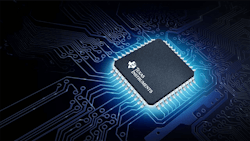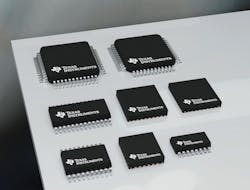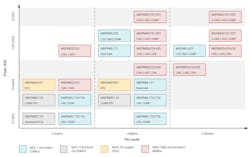Members can download this article in PDF format.
Microcontrollers (MCUs) surround us everywhere, from cell phones and automotive airbags to orchestrating AI-driven operation. An MCU can be thought of as a small computer with a high level of integration in a single part or chip. It has a central processor, memory for both short and long-term storage, and various ways to input and output data to perform actions.
Sponsored Resources:
- TI's comprehensive portfolio of Arm® Cortex®-M0+ MCUs
- Solve MCU design challenges with TI MSPM0 subsystems
- Accelerate development with MSP Zero Code Studio
The constituents of an MCU begin with its core component, where everything is directed and controlled; memory, where instructions are found and data is stored; and I/O components, which describe the physical pins of the device and their functionality.
MCUs come in a host of different configurations and levels of integration. They range from being targeted to specific applications, such as motor control or wireless connectivity, to completely general-purpose variations with basic to full-feature sets incorporated in the device. MCUs vary in clock speed, memory size or type, pin count, package size, or even multiple cores within the device (Fig. 1).
All information going into or out of an MCU must eventually pass through a pin. Some pins are dedicated to specific functions, like power pins or a device reset pin, while others can be mixed with different digital- and analog-focused functionality.
Digitally focused I/O interpret high or low voltages as set thresholds of ones or zeros; analog-focused pins pass through voltages without interpretation to the MCU. Some I/O pins have different physical characteristics to allow for larger currents or voltages to pass through them without damaging the MCU.
On that front, TI's comprehensive portfolio of Arm Cortex-M0+ MCUs offers pin-to-pin-compatible options to match memory, analog, and computing requirements ranging from low cost to high performance (Fig. 2).
MSPM0 Subsystems
TI’s MSPM0 subsystems integrate application building blocks to simplify software efforts. You can easily adapt each subsystem to meet specific end-equipment needs using step-by-step instructions, design insights, software, and suggestions for features.
As an aide to designers, TI put together the Analog Engineer’s Circuit Cookbook for Arm Cortex-M0+ based MCUs, which provides subsystem examples that designers can quickly adapt to meet their specific system needs. These subsystems can be used as standalone systems or combined together and added upon to create more complex applications with step-by-step instructions, design insights, software, and suggestions. And all subsystem examples can be easily ported to any device in the MSPM0 portfolio.
A good place to begin development on the MSPM0 MCU platform is the MSPM0 LaunchPad dev kit — an easy-to-use evaluation module based on the MSPM0. The LP-MSPM0L1306 kit is an evaluation module (EVM) based on the MSPM0L1306. It contains everything needed to start developing on the MSPM0L1306 M0+ MCU platform, including an onboard debug probe for programming, debugging, and energy measurements. The board has three buttons, two LEDs (one is an RGB LED), an analog temperature sensor, and light sensor.
Another helpful asset is TI's E2E support forums. They let you view discussions and post new threads to get technical support for utilizing MSPM0.
Small Size and Low Power
Consumers continue to demand that everyday electronic items, such as electric toothbrushes and stylus pens, offer more features in a smaller footprint at a lower cost. In response, TI unveiled what it says is “the world's smallest microcontroller” at Embedded World 2025.
Designated TI MSPM0CI, it features not only a small silicon area, but low power and minimal code footprint. It’s 38% smaller than the industry's current smallest MCU and enables designers to minimize board space without compromising performance. Measuring just 1.38 mm2, it’s based on the enhanced Arm Cortex-M0+ core platform operating at up to 24-MHz frequency.
This cost-optimized MCU offers high-performance analog peripheral integration, supports extended temperature ranges from −40 to 125°C, and operates with supply voltages from 1.62 to 3.6 V. Potential applications include medical wearables and personal electronics.
A Graphical Development Environment
While integrating an MSPM0 MCU into a design can save cost, board space, and provide increased control within a system, in the past, the required time and experience needed to create and update application code prevented many engineers from designing-in a new MCU.
TI's new graphical development environment gives engineers at all experience levels who lack specialized programming knowledge the ability to enhance designs with MSPM0.
How? MSP Zero Code Studio's drag-and-drop interface eliminates coding barriers. It’s a visual design environment that enables users to configure their MCU, develop an application, compile code, and program the MCU all from a single graphical user interface (GUI).
The user simply adds and connects blocks to the graphical interface and MSP Zero Code Studio generates all of the necessary code. No programming language, compiler, or IDE download required. MSP Zero Code Studio is available as a standalone download or on the cloud.
Sponsored Resources:


